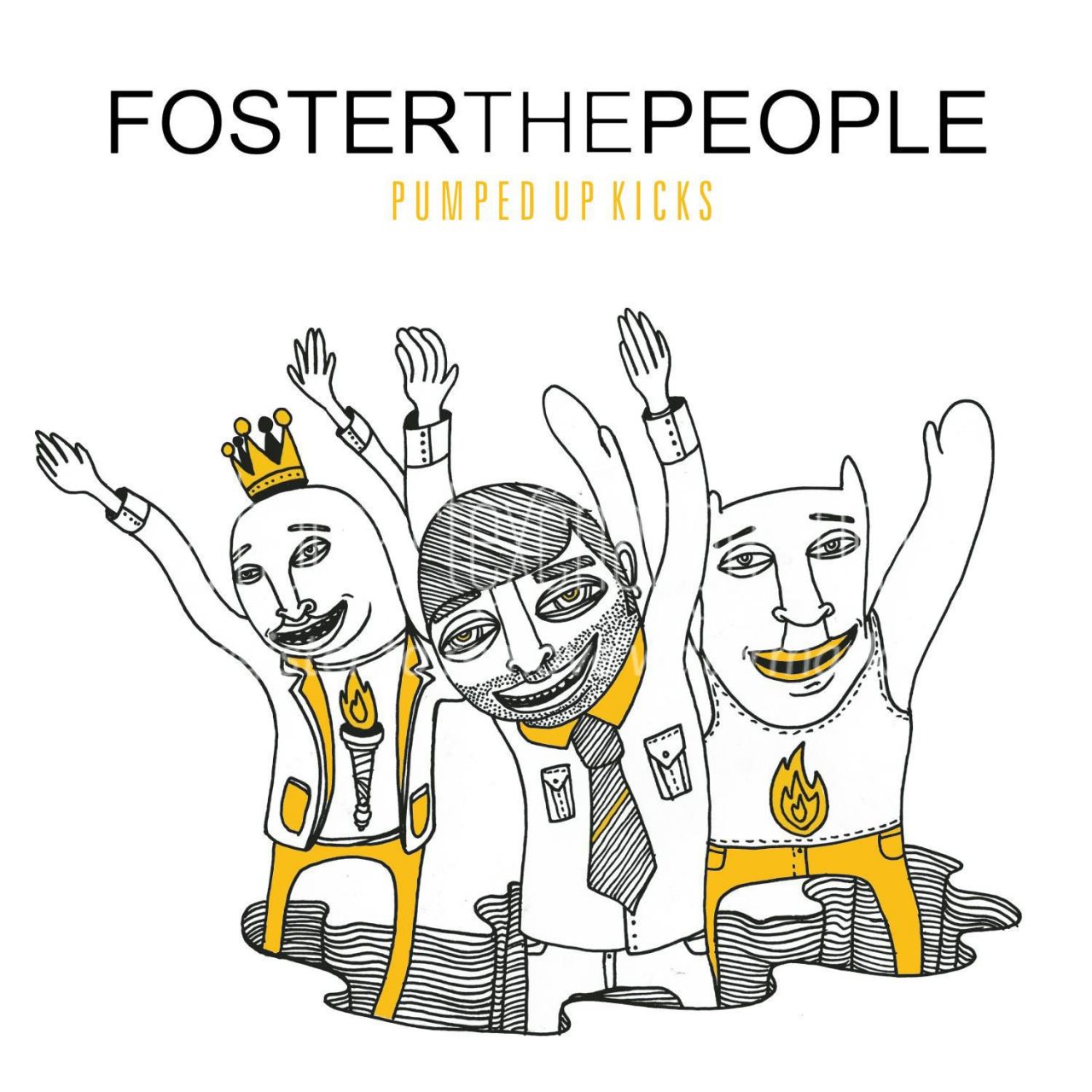
The band Foster the People continues the conversation started by Cobain about mental health in a national spotlight with its hit song “Pumped Up Kicks” which details a school shooting. Conversely with Cobain, none of the members of Foster the People experience depression. Their link to mental health can be found through their song “Pumped Up Kicks” and how it spreads awareness of depression. Mark Foster, the singer, had this to say regarding the song he wrote: “This song was written as a way to create ongoing dialogue for an issue that was being talked about, but when it came to government intervention, was largely being ignored” (Band talks Pumped Up Kicks). Foster was not the only member of the band who wanted to make a social stand regarding mental health. The bass guitarist Cubbie Fink has a cousin who was involved with the school shooting at Columbine High School in 1999 (Band talks Pumped Up Kicks). The music video to the song was considered so disturbing that MTV had to censor parts of it to ensure it was appropriate to play on air (MTVU Censors Foster The People’s Music Video). Foster The People’s “Pumped Up Kicks” helped illuminate the social stigma surrounding mental health through its lyrics and graphic music video.
The music video of “Pumped Up Kicks” reinforces the true meaning within the lyrics and portrays a school shooting happening at a high school. The music video strictly adheres to a narrative format because it does not include the band (concert category) and is not artsy. The first scene in the music video starts out with all the instruments playing (no vocals) while a school security guard and a teacher are having a conversation. The next two scenes then show the bustling cafeteria in the high school and a girl running down a road. These first few scenes of the music video can be interpreted as foreshadowing for school shooting for multiple reasons. The glimpse of the cafeteria shows the viewer that this will be the setting of the shooting while the cop and girl running signifies that there will soon be trouble in the school.
The core instruments of drum, guitar, bass and synthesizer are all being played as these foreshadowings are occurring. The bass guitar and drum form a riff highlighted by thick plucks of the bass and a simple drum pattern. The instruments form a timbre that can be described as vibrant and happy, creating an illusion that masks the vocals behind the song. The scene proceeds to cut to a couple of men enjoying lunch at a table inside the cafeteria. The camera pans to the face of one of the two and follows his gaze as he checks out a girl sitting across the cafeteria. Around the 32 second mark Mark Foster’s vocals begin to kick in once the boy sees the shooter “Robert” with a gun walking towards the cafeteria.
Diegesis occurs in various forms throughout the music video starting with the actions of the boy who first saw the school shooter. The music begins to fade out and for a few seconds the boy is staring at Robert with the assault rifle. The boy pushes him and his friend to the ground in order to protect themselves and is a perfect example of diegetic action. The narrator revealed the boy’s actions through the story, as opposed to describing them bluntly. Following this are two instances of diegetic sound; the sound of Robert firing his gun and the screams of students. There are more instances of diegesis in the video, but the only the diegetic sounds in the video are gunshots and screams.
As mentioned previously, the instruments of the song and the vocals starkly contrast on the effect it gives to the listener. The instruments create a happy, dance-enticing atmosphere while listening to the lyrics will give you shivers down your spine. The first line, “Robert’s got a quick hand,” is a clear reference to being able to shoot quick and accurately (Pumped Up Kicks Music Video). The “A” part of the song continues with describing how Robert finds his dad’s gun in his closet. The chorus, the “B” part, is simply Robert threatening “all the other pumped up kicks” (cool, wealthy kids) to run before he shoots them (“faster than my gun”). The “C” part of the song summarizes Robert’s poor family situation at home and how his dad is abusive (“…and he is bringing me a surprise…”).
https://www.youtube.com/watch?v=_MFt08wEUOQ
Foster The People does an excellent job of painting this setting in its lyrics and visuals with the clear intention of scaring or deterring people from this sort of action if dealing with mental health problems. They do this while also subconsciously allowing the listener to relate to or sympathize with Robert regarding his unfortunate childhood and his bullying. Musically it is hard to compare this song with Cobain’s “Lithium” because while Foster The People aggressively confronts this mental health problem to the extreme with its detailed lyrics and diegetic sound, Cobain confronted this problem through his internalization of the disease and portrays it through his grunge-infused voice and stage presence.
Sources:
Quan, Denise. “Band Talks ‘Pumped Up Kicks’ Post School Shooting.” CNN, Cable News Network, 21 Dec. 2012, marquee.blogs.cnn.com/2012/12/21/foster-the-people-school-shooting/.
Huff, Richard. “MTVU Censors Foster the People’s Music Video Hit ‘Pumped Up Kicks’.” Nydailynews.com, New York Daily News, 9 Apr. 2018, www.nydailynews.com/entertainment/tv-movies/mtvu-censors-foster-people-music-video-hit-pumped-kicks-article-1.132109.
Wayne, Sinbod. “Foster The People – Pumped up Kicks (MUSIC VIDEO).” YouTube, YouTube, 5 May 2017, www.youtube.com/watch?v=_MFt08wEUOQ.
